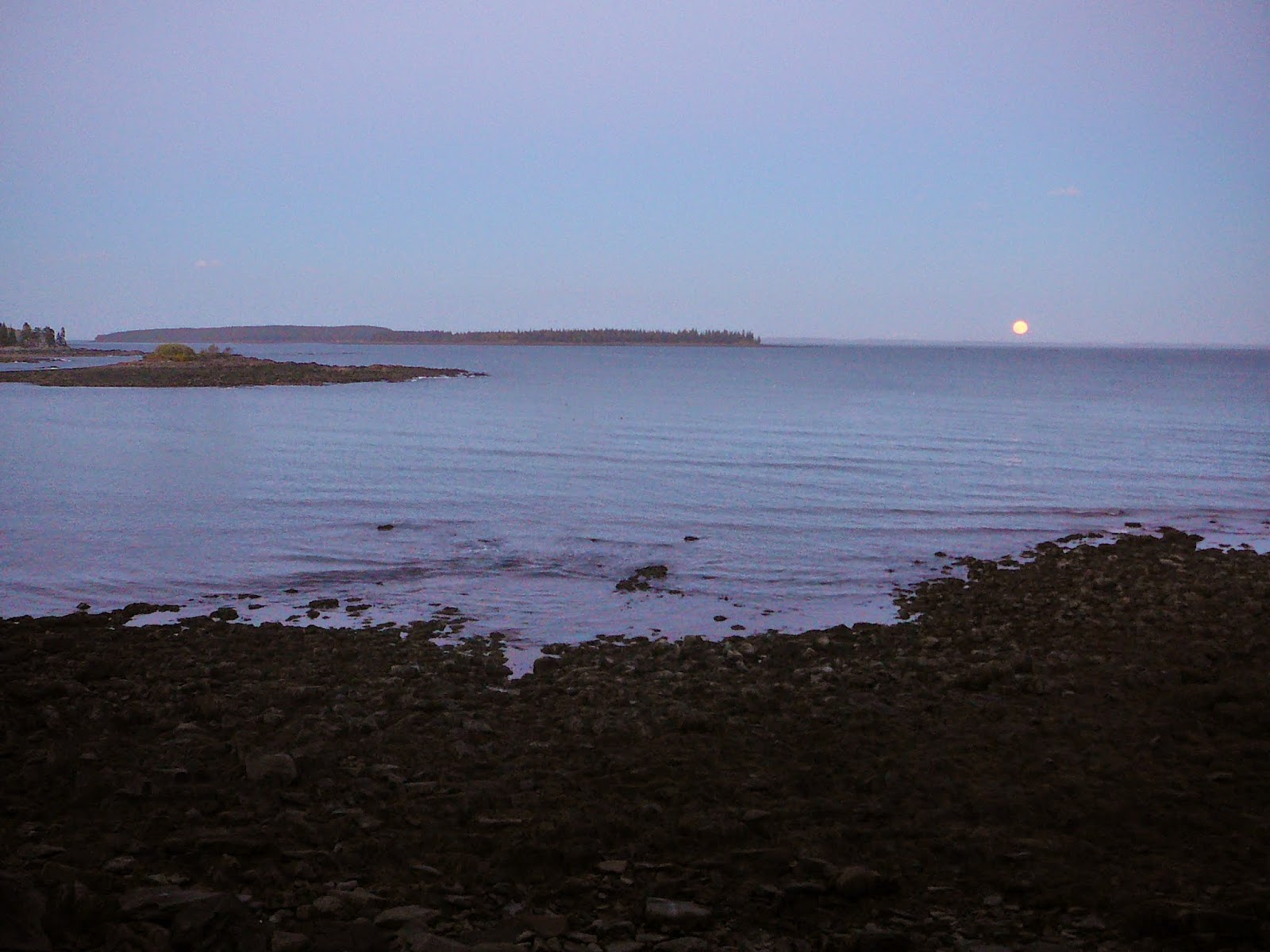Past Ellsworth Route 1 follows the
Down East coast. Development melts away. Long stretches of road are interrupted
by little clumps of gas station-IGA-diner-post office, and the occasional town
that acts as a gateway to the peninsulas to the south: Schoodic, Dyer Neck,
Petit Manan Point, Addison and Jonesport and
Roque Bluffs, and the almost completely undeveloped and preserved coast from
Cutler to West Quoddy Head. Blueberry fields and forests, not car dealers and
Pizza Huts, compete for attention.
Route One swings north before it
can reach the easternmost points in the US ,
Eastport (city) and West Quoddy Head (place), and traverses the lonely woods of
north Washington County Aroostook
County
At Houlton the St.
John River valley claims the landscape. This part of Maine is famous for its potatoes, and more recently
broccoli, and I thought before seeing it that it might be like the Midwest . I was quite wrong. The land is not flat but
rolling into hills, and in the distance into mountains like Katahdin, visible
from the highway. The fields are not monotonous, but stark and beautiful. The
houses are not protected by little copses of trees but sit openly and proudly
on the rises of hills. The woods are not little afterthoughts, or woodlots, but
real forests merging into the great woods to the west, coming right up to the
edge of the fields as if the work of man is clearly seen to have its limits. In
the Midwest one has to look at the sky for
illimitable views.
Route 1 ends in Fort Kent ,
the center of Acadian culture in Maine .
It’s as far north as you can go in New England, and contrasts strangely with
Route 1’s other terminus, the southernmost point in the US , Key
West . Guess which is my own personal Acadia .
The towns here show their own kind
of sprawl, I guess. A large Catholic church centers each town, and from it
white wooden houses and the occasional business straggle along each side of the
road, in both directions. No one seems to live off
Excerpted from Saving
Maine: A Personal Gazetteer







